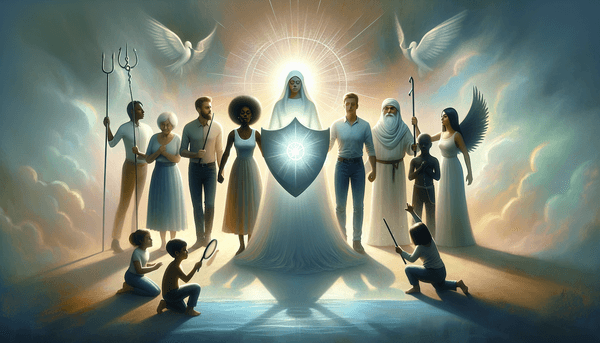Faith and Its Characteristics in the Bible
The Bible presents faith as a cornerstone of a righteous life. It is described as 'the substance of things hoped for, the evidence of things not seen' (Hebrews 11:1). The patriarch Abraham, for instance, was credited with righteousness because of his unwavering belief in God's promise, a faith that was counted to him as righteousness (Genesis 15:6; Hebrews 11:7). James reinforces the dynamic nature of faith when he argues that faith without works is dead (James 2:14-26), illustrating that authentic faith is characterized by actions that reflect belief. The transformative power of faith is perhaps most evident in the conversion of Saul of Tarsus, who became the apostle Paul, demonstrating that true faith leads to a radical change in one's life (Acts 9).
The Concept of the Trinity and Christian Doctrine
One of the most profound and mysterious doctrines of Christianity is the Trinity: the Father, the Son, and the Holy Spirit. The unity of the Godhead is a central tenet, expressed by Jesus when He declared, 'I and my Father are one' (John 10:30). The Great Commission instructs believers to baptize in the name of the Trinity (Matthew 28:19), highlighting the importance of this concept in Christian faith. The doctrine of the Trinity is also crucial in understanding salvation, as seen in the relationship between Jesus and the Father, where Jesus said, 'Anyone who has seen me has seen the Father' (John 14:9), implying a divine unity and cooperation in the act of saving humanity.
End Times and Eschatological Symbols
Eschatology, or the study of the end times, is replete with symbolic imagery and prophecies that have fascinated scholars and laypeople alike. The discussion concerning the rebuilding of the Third Temple is rooted in Jesus' prediction of the Temple's destruction (Matthew 24:1-2), which has been interpreted as having both historical and future fulfillment. In the realm of apocalyptic literature, the use of insects as symbols, such as in Revelation 9, showcases the enigmatic nature of biblical prophecy. Furthermore, the red heifer's role in purification rituals (Numbers 19:2-3) is sometimes seen as a precursor to the ultimate purification found in Christ, indicating the depth of typology found within Scripture.
God's Timing and the Fulfillment of Promises
The Bible is replete with assurances of God's sovereign timing and fulfillment of His promises. Jeremiah 29:11 reveals God's plans for our future and well-being, offering hope and a future. The Psalms encourage believers to wait patiently for the Lord (Psalm 27:14), reminding us that God's timing is perfect, even when it doesn't align with our own schedules. The rainbow, given as a sign after the flood, stands as a testament to God's faithfulness to His promises (Genesis 9:13), serving as a symbol of hope and God's unwavering commitment to His covenant with humanity.






